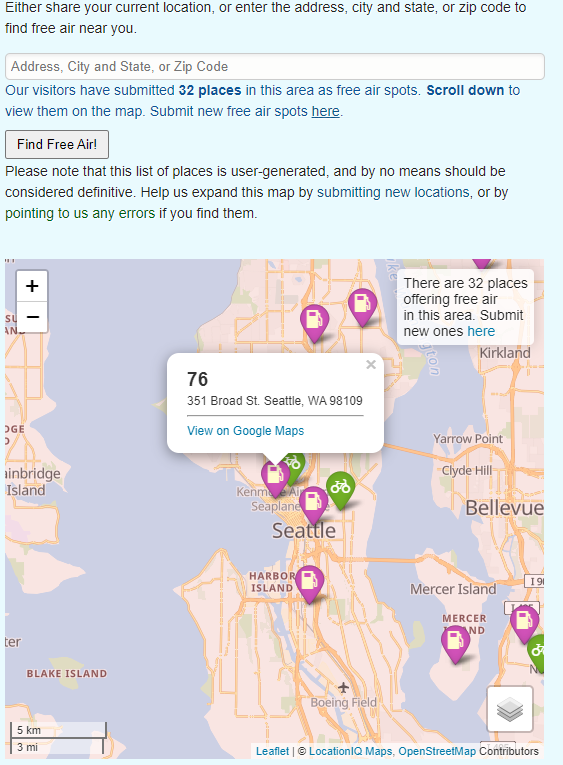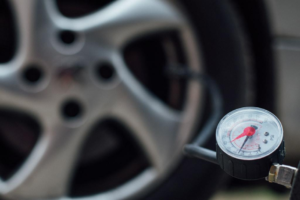Do you have a new car resting in your garage? Have you been handed down your family’s second-hand car? If so, the responsibilities of car maintenance are not lost on you. However, a good-looking car is not the only thing that is a concern for new and old drivers alike.
A well-maintained car gives you the best driving experience with fluid steering, smooth movement on the roads, and, most importantly, durability. All of these can be achieved by simply maintaining the correct tire pressure. With the long list of things that must be done to maintain a car, we are here to make your job a little easier. In this article, we detail how to check the air pressure in your tires and how to maintain it at the required pressure.
Table of Contents
The Optimal Tire Pressure
Maintaining your vehicle’s tires is essential. We all want the best performance for our cars or bikes, while being safe too. One way to ensure your vehicle’s good performance is by ensuring your tires have the correct air pressure. According to professional car designers and engineers, the correct tire pressure ranges between 30 and 35 PSI (pounds per square inch). Of course, the tire pressure depends on your car, its brand, its weight, and so on, making it difficult to specify a particular PSI for all cars. However, car manufacturers recommend the tire pressure printed on the label inside of the car, either in the glove box or on the side door. So, it is wise to follow their instructions. The label provides precise specifications on the ideal air pressure for the front and rear tires. In addition, it is essential to check the air pressure in your spare tire so that if any tire loses air over time, then the spare can be used as a replacement.
Maintaining Tire Pressure
Like any object that is used regularly, your vehicle needs occasional checks. Checking your PSI during colder weather is advised because tires lose air quicker in low temperatures. Aside from knowing the specific PSI, getting your tires checked at a gas station or by a professional at least once every month is advised.
If the necessary checks are not done, your car will suffer as its longevity is put at risk. Your tires could be damaged permanently or there could be a flat tire.
When to Check the Pressure
The best time to check the tire pressure of your vehicle is in the early morning hours. However, if you have already used your vehicle, you can check the air pressure three hours after it is driven so that there is ample time for the tires to cool down.
How to Check Tire Pressure

Step 1: Make Sure the Tires Are Cold
Only check the tire pressure with cold tires, as the recommended PSI given by manufacturers is given under the assumption that the tires are cold.
Step 2: Find the Recommended Tire Pressure
Be aware of what the manufacturer’s recommended PSI level is. If you have trouble finding out what the required tire pressure is, then consult with an expert. This could be done by visiting the official brand’s website for more information on the model configurations and requirements or consulting with your local professional at the gas station or service station.
Oftentimes, the recommended tire pressure is written on the side of the tire or on a sticker inside the driver’s door.
Have a pen and paper handy to write down the pressure levels so you can be precise when the tire is pumped. This is crucial, as the front and rear tires have different pressure requirements.
Step 3: Check the Current Tire Pressure
Use a pressure gauge to check the tire pressure. This is done by removing the valve cap, inserting the gauge into the valve, and then firmly holding it down until a reading is displayed.
You can get a tire pressure gauge from Amazon.
Step 4: Know How Much Air You Need
Once done, do the math to see how much air needs to be pumped into the tire. This way you’ll have a good idea of how much air you’ll need.
Step 5: Fill the Tires
Fill it to the required PSI level. If you are using an air compressor at a gas station, read the instructions and follow them accordingly to avoid any accidental errors.
Be sure not to underfill or overfill your tire with air, as this will be detrimental to the tire and vehicle. If the tire is overfilled with air, it is not a significant cause for concern. Air can be let out of the tire. However, do not use your vehicle until that extra air is let out.
How to Find Free Tire Air
Many gas stations charge $1-$1.50 to inflate your tires. If you don’t have an air compressor at home, this can sometimes feel like a rip-off. Luckily, there are still some places that you can find free air for your tires.
The website Free Air Pump has done a great job of consolidating places across the US that offer free air. Anyone can submit new locations to their database.

Pro Tip: If you can’t find a free tire air place near you, we recommend that you open all of the caps/covers on your tires before you pay for the air so that you don’t waste precious time unscrewing them once you’ve paid. Even if the air is free, unscrewing them ahead of time will mean you’re not fumbling to unscrew them while holding the hose.
Choosing the Right Pressure Gauge

Choosing the correct pressure gauge is highly important because, without an accurate reading, you could have trouble while driving. There are three types of gauges found on the market:
Digital Gauges
These are the most modern take on pressure gauges and display the pressure value on a screen.
Pen-Type Gauges
These gauges are traditionally in a rod-like shape with a ruler on the side to mark the air pressure in the tires. This gauge is slid in and used to read the air pressure.
Dial Gauges
These gauges have a circular dial that gives the air pressure reading. It can be read like a watch on your wrist.
Ensure that the pressure gauge you use is accurate. Before making a purchase, you can consult an expert. Or, if you are buying a pressure gauge online, you can scan through the reviews and rely on trusted brands. For digital gauges, change the batteries whenever needed.
Conclusion
Not having the proper air pressure in your vehicle’s tires can lead to multiple problems. Some of them being a turbulent driving experience, faster tire wear-and-tear, poor mileage, punctures, and more. Hopefully, you will be able to use this article and look after your vehicle with proper care and maintain your tire pressure. However, remember that regular maintenance can help your car run a long way, and you will be able to enjoy the benefits of a well-maintained car, such as better fuel efficiency and a good driving experience. In case there are any problems, it is best to consult with a professional who deals with car repairs and maintenance.



